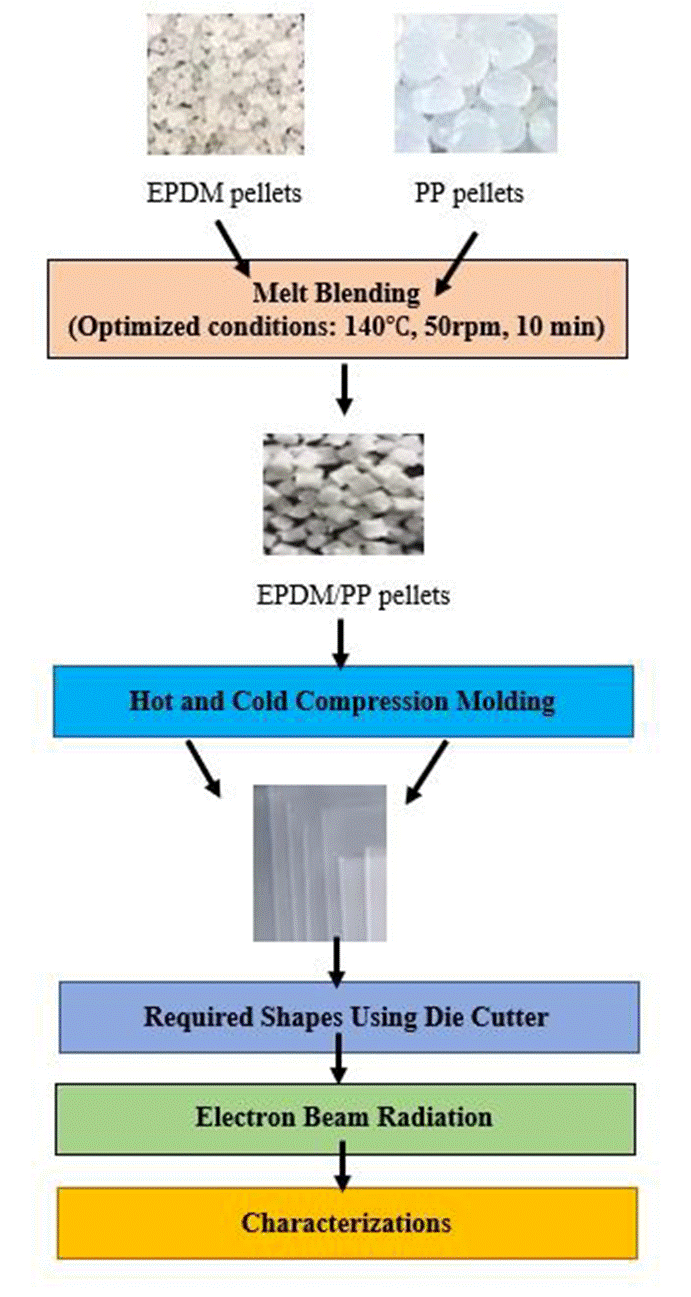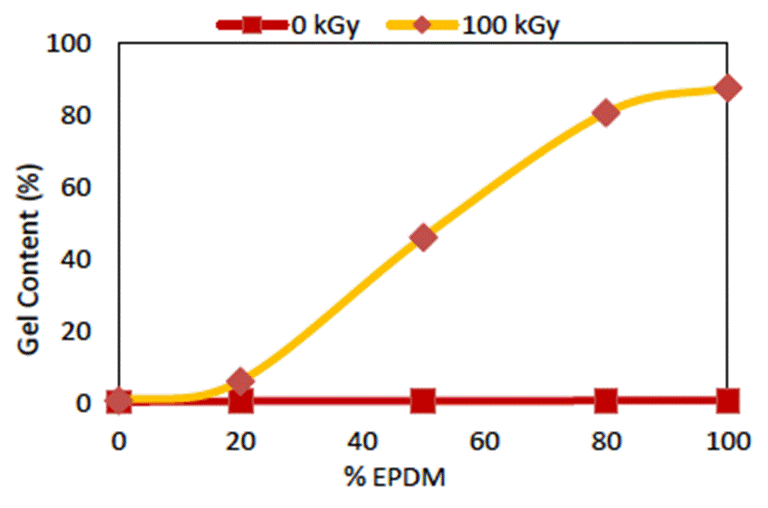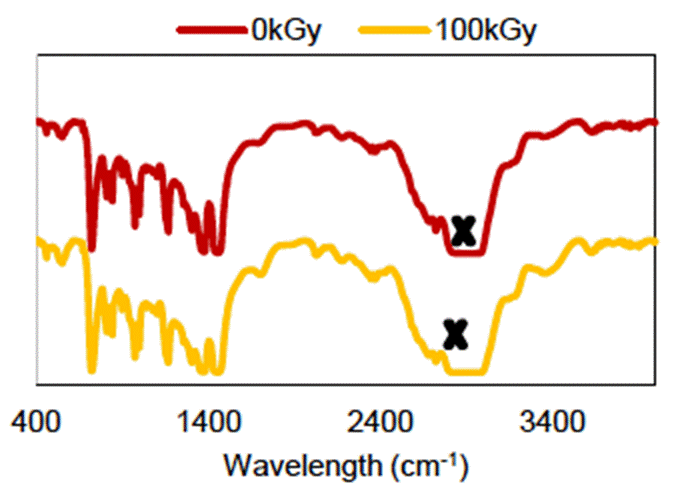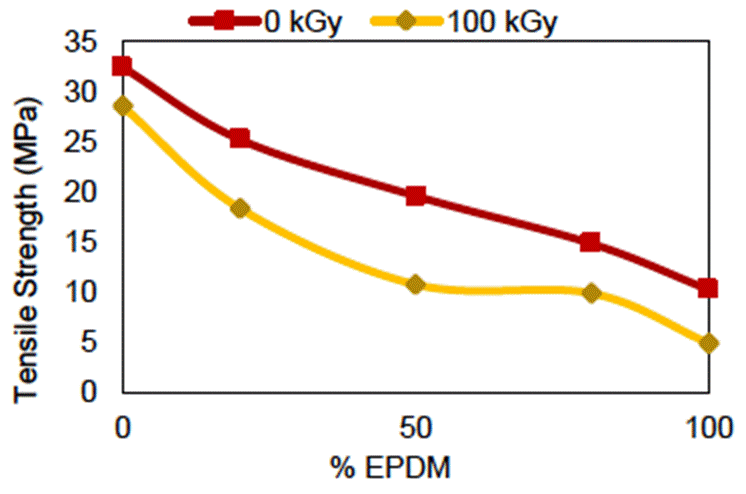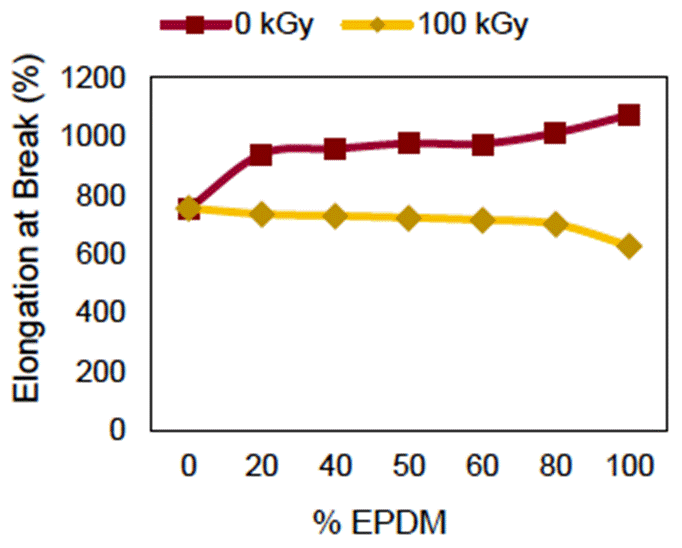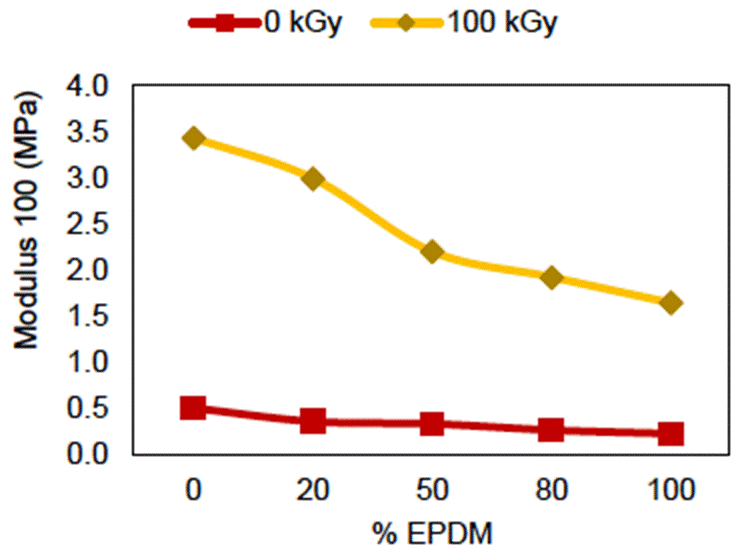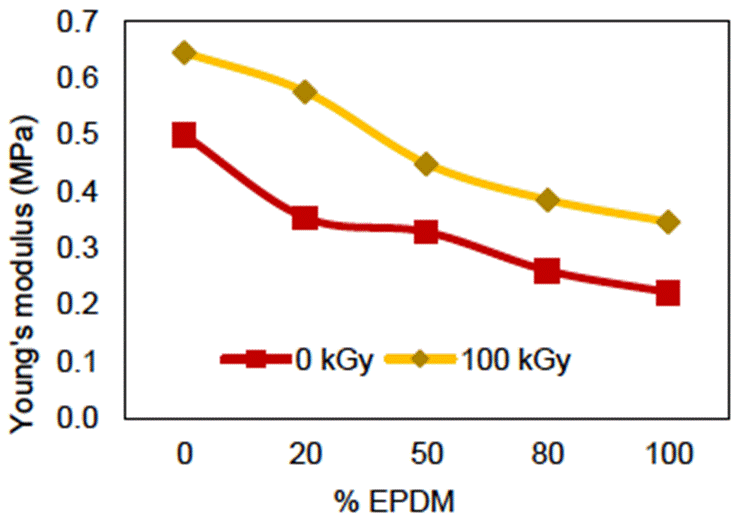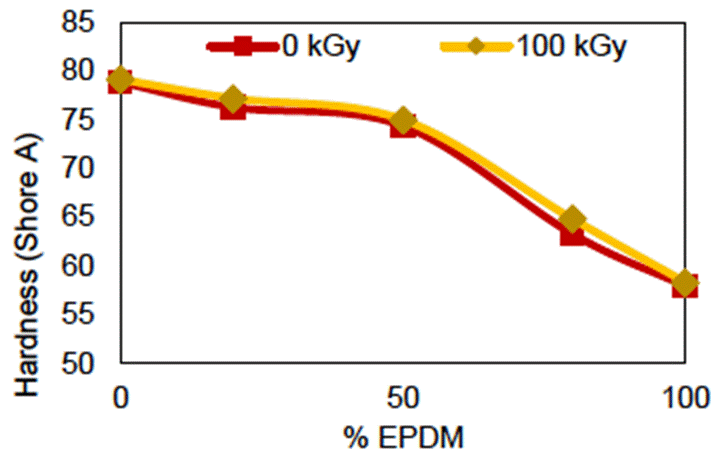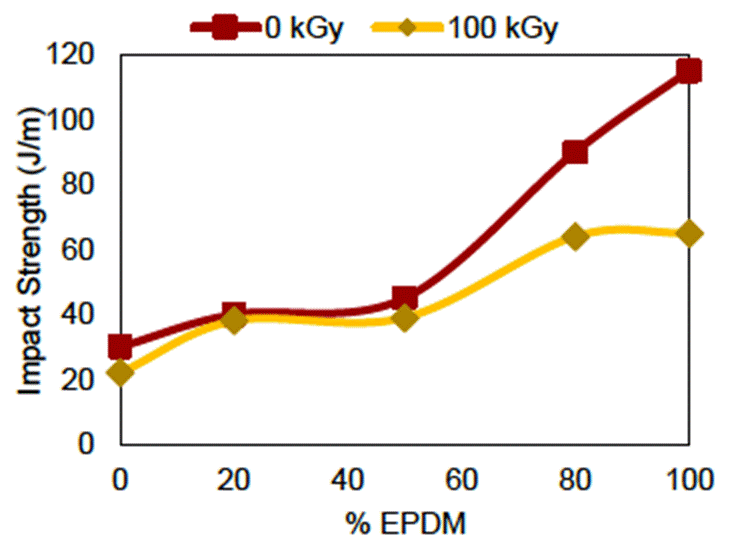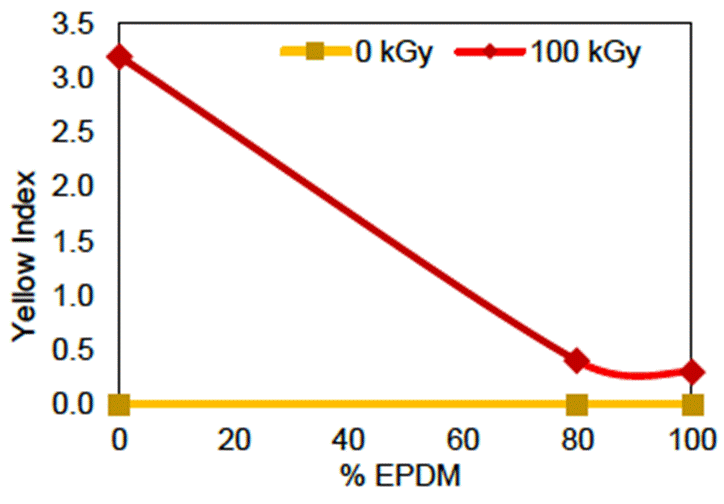1.Introduction
Thermoplastic elastomers (TPEs) are tremendously fabricated in the recent years as they have unique properties with the perfect combination of individual properties of plastic and elastomer where both characteristics of vulcanized elastomer and thermoplastic properties are applied. The properties of both plastics and rubbers enhance the TPEs being essential especially applications such as healthcare devices, food packaging automotive and electrical industries (Chaudhari et al., 2007).
Polymers are materials that applied together with elastomers to produce better strength materials. One of the common polymers is polyvinyl chloride (PVC). To meet the demand of the market, PVC is processed with plasticizers. However, the presence of phthalates within the plasticizers are irreconcilable to human beings that leads to various health hazards. Therefore, the potential replacement for PVC is polypropylene (PP). PP-based thermoplastic elastomers are well used in the medical area because they can be easily processed with economical properties. However, higher PP content materials show poor mechanical and thermal properties. In addition to that, it also shows properties like yellowing and having a short shelf life caused by oxidation after a certain period of storage time. In order to ensure PP- based materials to perform better mechanical and thermal properties, E-beam radiation sterilization is essential.
However, high PP concentration blends with TPEs is incompatible for sterilization under E-beam radiation sterilization. E-Beam radiation sterilization is currently the most preferred sterilization method with its quick, low cost and bulk processing advantages (Markarian, 2004). With the introduction of radiation sterilization to the PP/TPEs, the mechanical properties can be improved. However, PP has drawback after radiation sterilization. To reduce the radiation sterilization of binary blends, Ethylene-Propylene Diene Monomer (EPDM) can be one of the TPEs to blend well with PP. Addition of EPDM enhances the flexibility of PP-based polymeric blend with improved properties upon radiation.
Mousavi et al. (2021) mentioned that PP/EPDM/cellulose nanocrystal blends improved the tensile strength and Young’s modulus significantly by 600-700%. Based on the research of Pereira et al. (2021), PP and ethylene-PP copolymer exhibited high tensile strength and impact strength through injection molding. Moreover, Peng et al. (2020) proved that the combination of silane crosslinked PP with EPDM improved the mechanical properties of the blends. EPDM rubber was improved with the introduction of clay filler in terms of rheological characteristics as well as physical and mechanical properties for industrial products (Khalaf et al., 2020). Besides, addition of carbon black fillers functioned as compatibilizer in PP/EPDM which enhanced the mechanical properties at low content of PP (Hel et al., 2020). Hajibabazadeh et al. (2020) enhanced the PP/EPDM blends through the introduction of hydrophilic-nanosilica concentration up to 5wt%. PP/EPDM/ammonium lignosulfonate (AL) blends were studied, and it was proven to be a good flooring laminate material due to the elasticity of the PP and AL (Gou & Guo, 2019). Simsek et al. (2018) showed that the addition of 80wt% EPDM waste into PP improved impact resistance to reduce thermoset rubbers waste disposal problem. In addition, PP/EPDM with higher ethylene content led to better mechanical properties compared to lower ethylene content (Avalos et al., 2017). Mahallati et al. (2016) proved that twin- screw extruded 50/50 PP/EPDM improved in terms of particle size and interfacial adhesion.
PP/EPDM binary blends has not been brought to the medical sector although the blends are profoundly available in the market. Therefore, the aim of this work includes the fabrication of PP/EPDM blends through melt blending with E- beam radiation sterilization exposure at 0 kGy and 100 kGy dosage and the investigation of physico-mechanical properties of PP/EPDM binary blends.
2. Materials and methods
2.1. Preparation of PP/EPDM binary blends
Figure 1 showed the preparation of PP/EPDM binary blend preparation. PP/EPDM binary blends with mixing ratios of 80:20, 60:40, 50:50, 40:60 and 20:80 was melted blended at 140˚C for 10 minutes at 50 rpm. The binary blends were then collected and pressed into slabs using a LP-S-50 Scientific hot press compression molding machine, supplied by AB Tech Engineering Company Ltd, Thailand. The binary blends were placed between aluminum sheets and compressed, followed by cutting process of binary blends into the thickness of 1 mm, 3 mm and 6 mm for testing and analysis.
2.2. E-beam radiation sterilization
The compression molded sheets were exposed to radiation under 3 MeV beam accelerator, which was supplied by NHV Corporation, Kyoto with film conveyors. The samples were radiated at 0 kGy and 100 kGy.
2.3. Materials
PP was obtained from LCY Chemical Corp, USA, with flow index of melt at 18g/10 min, density of 0.9g/cm3 and a melting point at 78°C. EPDM used was obtained from Mitsui Chemicals, Shanghai of grade 3092 PM.
2.4. Characterizations
2.4.1. Gel content
Gel content analyses were measured according to ASTM D2765. The binary blends were extracted for 24 hours in boiling xylene using a Soxhlet extraction set. The resulting samples were then dried in an oven at 70°C until a constant weight was obtained. Gel content was determined using Eq.1.
2.4.2. Fourier transform infrared spectroscopy (FTIR)
The chemical functional group of the PP/EPDM binary blends was characterized using Fourier transform infrared spectroscopy (FTIR, Perkin Elmer Spectrum 2000, USA). The spectrometer was operated with 50 scans at 4 cm-1 resolutions. The range used is 4000-400 cm-1 for each sample.
2.4.3. Tensile test
The tensile test was done according to ASTM D 1822 L standard using Universal Testing Machine. The slab was cut in dumbbell shape with thickness of 1 mm. The tests were conducted at 22°C with the speed of the crosshead was set to 50 mm per minute. The data that were collected included tensile strength, modulus 100 (M100) and the percentage of elongation at break. The test was repeated for five specimens and the average value was calculated.
2.4.4. Impact test
The rectangular shaped binary blends with thickness of 3mm were notched using Nothing machine CEST (Model CE UM-636, USA) and conducted based on ASTM 256-97 standard. The test was conducted for five binary blends and the all the binary blends were considered for results analysis. The average value of the five samples was calculated and recorded.
3. Results and discussion
3.1. Gel content
Figure 2 showed the gel content of PP/EPDM binary blends at 0kGy and 100 kGy irradiaton dose. It was clearly proven that irradiated PP/EPDM binary blends increased up to 87% when EPDM ratio increased. With the exposure of radiation sterilization on polymer such as PP, crosslinking and chain scission occurred. PP is degraded once it is irradiated as it absorbed energy to abstraction of hydrogen from polymer backbone (Makuuchi & Cheng, 2012). Mechanical properties were greatly improved when the EPDM blended with PP which enhanced crosslinking within the blends. Gel content of 80% and 100% PP was low as EPDM dominated the radiation- induced crosslinking was greater than PP dominated chain scission (Geissler et al., 1978). Overall, PP/EPDM binary blends produced higher percentage in gel content with 100 kGy irradiation dose.
3.2. Fourier transform infrared spectroscopy (FTIR)
Chemical structure of the polymers affects the new chemical bond formation rate. Figure 3 showed the FTIR analysis of PP/EPDM binary blends. 20:80 PP/EPDM binary blend was chosen as it showed stability under radiation that induced more crosslinking, chain scission and oxidation reactions within the binary blends (Singh & Bahari, 2003). The binary blend was tested with and without radiation. The E-beam radiation sterilization affected several structural changes which alters the physical and mechanical properties of the binary blends. Crosslinking reaction through free radicals as well as radiated PP occurred at CH2 and CH groups. This could be clearly identified through Figure 3 where the peaks appeared at 2900 to 2800 cm-1. Besides, no new functional group formation and significant chemical changes were observed for both 0 kGY and 100 kGy irradiation dose. Overall, the introduction of EPDM showed strong CH2 and CH bonds on the binary blends without affected by the radiation sterilization.
3.3. Tensile test
Figure 4 showed the tensile strength of PP/EPDM binary blends at 0 kGy and 100 kGy. Prior to radiation, the tensile strength of 20% EPDM content, 50% EPDM content and 80% EPDM content were 25.19MPa, 19.57MPa and 14.83MPa, respectively. It was clearly shown that the tensile strength of PP decreased as EPDM content increased with and without irradiation. The amorphous nature of EPDM lowered crosslinking with PP and thus, lowered the tensile strength. Upon radiation, the tensile strength of PP decreased due to the radiation-induced scissions in PP chains that undergone oxidative degradation, and this led to the reduction in the tensile strength (Otaguro et al., 2010). For EPDM, the polymer chain within it ruptured after irradiation that led to lower tensile strength. Besides, excessive crosslinking formation within the binary blends promoted the speedy reduction in the tensile strength (Abiona & Osinkolu, 2010). When the radiation dose was higher, more crosslinks were formed between the crosslinked chains. This led to more breaking process of larger networks into smaller networks, which reduced the tensile strength. In order to retain the tensile strength, presence of EPDM with PP in the ratio of 20:80 enhanced the tensile strength of the binary blends.
3.4. Elongation at break
From Figure 5, without irradiation, 100% PP content, 80% PP content, 50% PP content and 20% PP content exhibited elongation at break of 7545, 940%, 976% and 1012%, respectively. However, 100% EPDM exhibited elongation at break of 1072% as the elastic properties of EPDM maximized the stretching process. Therefore, increment of EPDM content increased the stretching ability, and this led to higher elongation of PP/EPDM binary blends.
From Figure 5, 20% EPDM content, 50% content and 80% content showed elongation at break of 736%, 724% and 702% after irradiation. Irradiated EPDM content blends showed lower elongation at break compared to non-irradiated EPDM content blends. This was due to the formation of a three- dimensional network within the binary blends with the restricted movement of molecular chain (Mohamad et al., 2008). Overall, with 0kGy irradiation dose, PP/EPDM binary blends performed better compared to irradiated dose at 100 kGy for elongation at break.
3.5. Modulus 100 (M100)
Figure 6 showed that the increment of EPDM content reduced the M100 of PP/EPDM blends decreased. This was due to the elastic properties of EPDM reduced the hardness of PP (Mohamad et al., 2008). Higher content of PP in binary blends provided a harder specimen compared to the higher content of EPDM, where the amount of force to stretch the PP/EPDM binary blends greatly reduced. M100 of PP content blend was higher after radiation due to the occurrence of chain scission within PP content blend that hardened the blends. Harden blends required more force to stretch the blends, led to higher amount of M100 in PP content blends after irradiation dose at 100 kGy.
M100 for EPDM content blend was higher after irradiation. The formation of crosslinking within the blends increased the hardness of the blends which increased the force needed to stretch the blends increased (Candau et al., 2020). Overall, with 100kGy irradiation dose, PP/EPDM binary blends produced higher M100.
3.6. Young’s modulus
Figure 7 showed that the Young’s modulus of PP/EPDM blends at 0 kGy and 100 kGy were decreasing as the EPDM content increased. The blends became more elastic when EPDM content increased which softened the blends and reduced the Young’s modulus to decline the rigidity of blends. Introduction of EPDM increased the occurrence of crosslinking within PP/EPDM binary blends that lowered Young’s modulus (Zarandi & Bioki, 2013). Irradiation strengthened the molecular structure of the blends with stronger crosslinking bonds between the molecules. Higher value of Young’s modulus presented harder material property with lesser elastic properties. This proved that PP/EPDM binary blends became less elastic after exposure to radiation which made the blends stiffer. Overall, PP/EPDM binary blends showed lower Young’s modulus at 0 kGy dose.
3.7. Hardness test
Figure 8 showed that 100% PP was around 78.8 Shore A and 79.1 Shore A which showed the highest hardness at 0 kGy and 100 kGy, respectively. The crystallinity of PP strengthened the structure and caused the blends to become harder. Higher degree of crystallinity presented the higher compactness between the molecules of PP/EPDM binary blends. 20% and 50% EPDM showed a closer value of hardness around 75 Shore A. However, 80% EPDM blend showed a significant decrease up to 64.25 Shore A, where 100% EPDM blends showed only 57.9 Shore A, due to its amorphous nature that softened the blends. The rubber phase of EPDM with elasticity had contributed to a reduction of 80% in hardness test for 80:20 PP/EPDM binary blends. Overall, PP/EPDM binary blends showed lower hardness value at 0kGy irradiation dose compared to 100kGy dose.
3.9. Impact strength
Figure 9 showed the impact strength of PP/EPDM binary blends with 0kGy and 100kGy. With irradiation, the introduction of EPDM improved the impact strength of 80% PP content blends wih value of 39.13 J/m. This was due to the soft elastomer of EPDM which provided toughening effect within rigid PP content blend matrix. The impact strength of 100% EPDM content blend increased up to 118 J/m. This showed the higher resistance of the material to fracture under impact strength. 20:80 PP/EPDM binary blends showed the highest impact strength with value around 90 J/m. The result showed that EPDM performed well in enhancing the toughness and flexibility of thermoplastic material. Besides, radiation exposure increased the formation of larger network which reduced the distribution of energy within the PP/EPDM binary blends, thus reducing the impact strength (McKeen, 2018). Higher EPDM content in PP/EPDM binary blends prevent the fracture of blends due to high crosslinking performed within the blends.
3.9. Yellow index
The yellow index of 100% PP content blends, 80 % EPDM content blends, and 100% EPDM content blends were 0, as shown in Figure 10. After irradiation, the yellow index of 100% PP content blends, 80 % EPDM content blends, and 100% EPDM content blends were 3.2, 0.4 and 0.3, respectively. 100% PP content blends deepened their yellowness due to the chain scission which initiated the free radicals upon radiation (von Sonntag, 2003). The free radicals undergone oxidation after they were exposed to the atmosphere led to the formation of chromophores like -C=O and -COOH, the functional groups which were reliable for the yellowing of the material. As EPDM initiated and increased the crosslinking process, higher EPDM content blends showed lower yellow index as the formation of chromophore decreased during radiation. Therefore, higher EPDM content blends such as 20:80 PP/EPDM binary blends produced better surface effect with lesser yellowness.
4. Conclusions
The introduction of EPDM content into PP/EPDM binary blends improved the mechanical properties upon radiation. Gel content of PP/EPDM binary blends was higher after radiation due to the presence of crosslinking. 20:80 PP/EPDM binary blends provided higher tensile properties upon radiation due to chain scissoring of PP. Introduction of EPDM into the binary blends decreased the tensile strength of PP, whereas the elongation at break as well as the impact strength increased with higher EPDM content blends due to the elasticity performance of EPDM. 20:80 PP/EPDM binary blends provided lower yellow index. Overall, 20:80 PP/EPDM binary blends proved to have the best mechanical properties with stable performance under radiation sterilization which enhance the blends fabrication for medical usage.











 nueva página del texto (beta)
nueva página del texto (beta)

